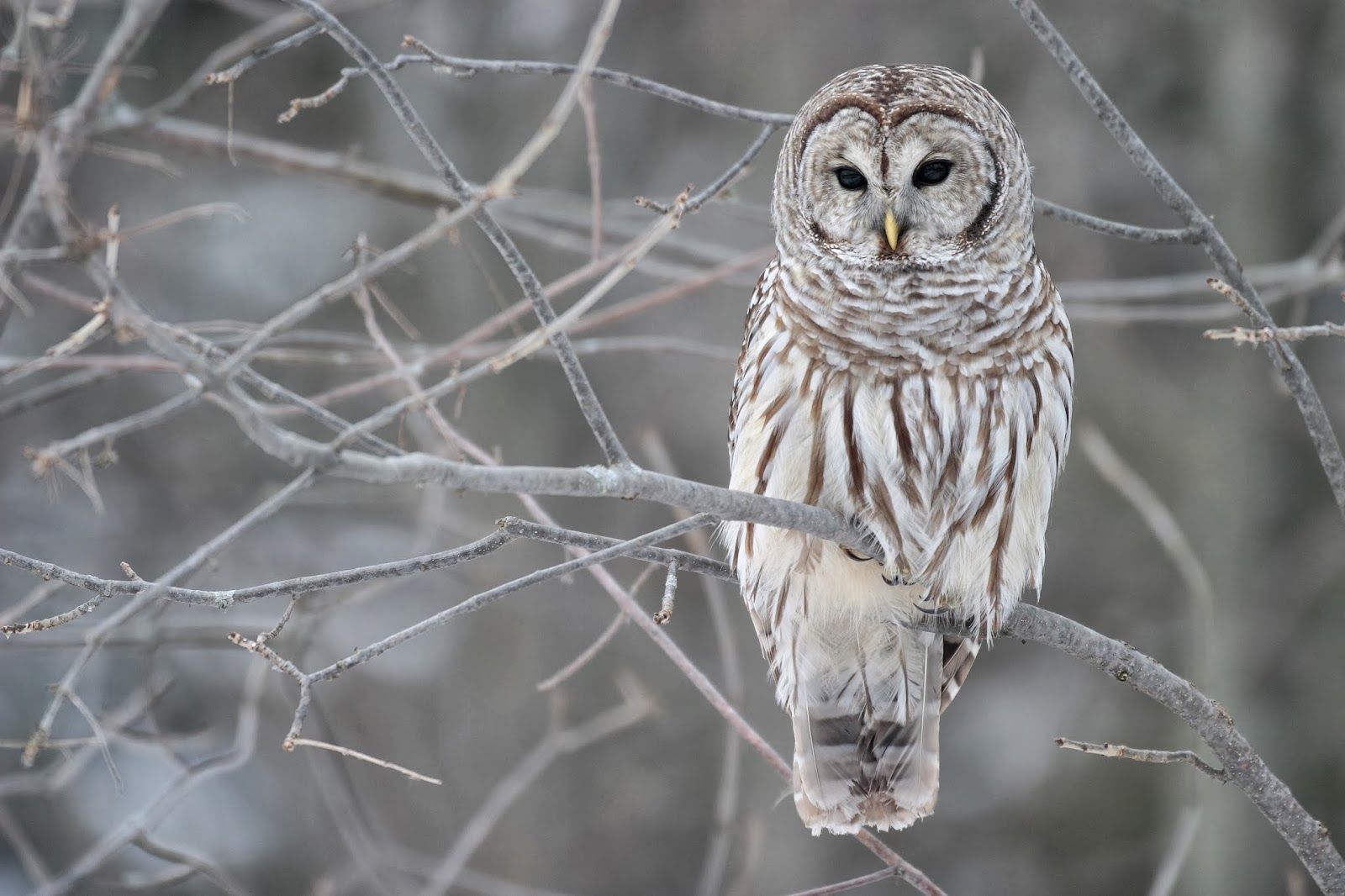Animals in Winter: Barred Owls

Photo courtesy of Vermont Fish & Wildlife Owls are everywhere in Vermont this winter! Snowy owls have migrated south from the arctic in search of prey, making this winter an irruption year. Snowy owls sightings have been reported statewide and across the northeast. But snowy owls aren’t the only raptors taking residence in Vermont this winter. The barred owl, Vermont’s most common, doesn’t migrate and populates the state’s forests all year long. Barred owls are grayish-brown with white stripes on their wings, back, and vertically across their belly. Unlike other owls in Vermont, they have brown eyes. If you haven't seen a barred owl, there is a good chance that you’ve heard one. They have many vocalizations including hoots, grunts, squeaks, and gurgles. Their most recognizable call sounds like, “Who-cooks-for-you? Who-cooks-for-you-all?” Female and male owls communicate during mating season in late winter by calling and responding to each other or vocalizing in u...

